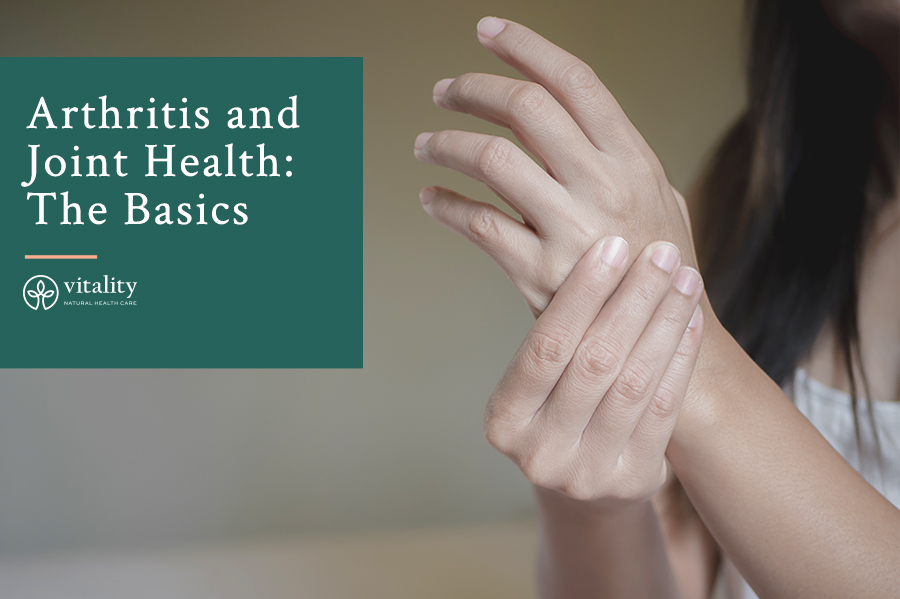According to the Centers for Disease Control, more than 54 million Americans suffer from arthritis. That means one in every four people over the age of 18 experience stiff, achy, hard to move bones and joints (1).
Joints, also known as articulations, are the points in your body where two or more bones meet. In your body, you have three types of joints: fibrous or immovable, cartilaginous or partially movable, and synovial or freely movable.
Each joint has a unique shape and structure specific to the range of motion and type of action it supports.
- Fibrous joints are made of tough collagen fibers and include the sutures of the skull.
- Cartilaginous joints are composed of a band of cartilage that binds your bones together; like the joints between the ribs.
- Synovial joints are a fluid-filled space between smooth cartilage pads at the end of articulating bones. The fluid in this space is called synovial fluid. This fluid lubricates the joint, reducing friction as well as wear and tear.
The body is meant to be mobile.
But, when you have arthritis, movement can be challenging and painful since the joints are no longer able to function properly due to a reduction in cartilage, the drying of synovial fluid, and inflammation.
There are several different types of arthritis, the most common being osteoarthritis, which affects approximately 33 million American adults (2). It most frequently affects the hips, hands, and knees, and is characterized by swelling, stiffness, pain, and a reduction in range of motion in the affected area. This type of arthritis often occurs as a natural part of the aging process, from natural wear and tear of our bodies over years of repeated use. However, it can also be caused by a high impact injury to the joint, one that affects the cartilage and/or the synovial fluid.
Another type of arthritis is Rheumatoid Arthritis. This is an autoimmune condition that occurs when the immune system attacks the joints, assuming they are toxins or foreign organisms. Attacking the joint results in inflammation, long-lasting damage to joint tissue, redness, and deformity. Rheumatoid arthritis affects the hands, wrists, and knees most commonly, but since it is an autoimmune condition, it can also affect other tissues, like the heart and lungs.
Gout is also a form of arthritis. However, it differs from osteoarthritis and rheumatoid arthritis in that it typically only affects one joint at a time, often the big toe, but can also affect the other toes, the ankles, and the knees (3). This form of arthritis is caused by a buildup of uric acid in the joint. Uric acid is a chemical created when the body breaks down purines, organic compounds found in foods like anchovies, peas, dried beans, and liver. Most of the uric acid produced by your body dissolves in your blood and travels to your kidneys where it is released from the body through urination. However, if the kidneys are unable to flush out the uric acid your body produces, it can result in gout.
In addition to the three types of arthritis mentioned, joint disorders and arthritic symptoms can also be caused by autoimmune disorders, like lupus, Hashimoto’s, Sjogren’s, and Lyme disease, all of which cause chronic inflammation in the body.
If you are experiencing joint and other arthritis symptoms, talk to our doctor about testing and diagnosis. Your doctor or healthcare practitioner can diagnose gout by testing your uric acid levels. Similarly, they can also check for osteoarthritis and rheumatoid arthritis through imaging and scans or blood tests, respectively.
Your body was meant to be able to move with ease, but lifestyle and genetics can play a role in your bodies ability to function. Both of these components can affect whether or not you develop arthritis or have poor joint health, but it IS preventable.
In the next blog post of this four-part series on joint health, I will discuss how to prevent your joints from aging prematurely and how to protect your cartilage from wear. I will also discuss how you can keep your synovial fluid healthy. Stay tuned!
xo,


